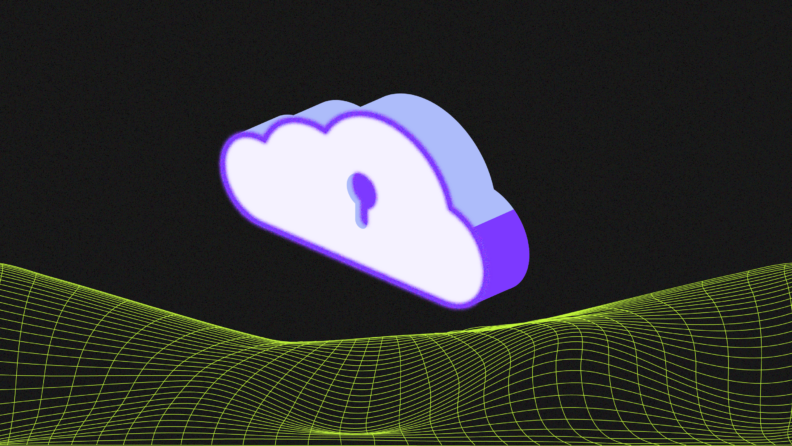Cloud infrastructure may be maturing, but 95% of security professionals are concerned about security in the public cloud. If your organization uses a hybrid infrastructure or relies on public cloud providers, it’s vital you consider your security posture. Read on to learn more about current cloud trends and challenges.
The Evolving Landscape of Cloud Security
Cloud computing's journey began in the 1950s and 1960s, marking a significant shift in how companies approached computing. During the 1950s, the use of large mainframe computers was common in businesses, but their high cost made individual ownership impractical. To address this, the late 1950s and early 1960s saw the development of time-sharing systems. These systems allowed multiple users to share the processing time of a central mainframe, optimizing its use and reducing idle time. This approach laid the groundwork for what we now recognize as cloud computing.
During the 1970s and 1980s, tech giants like Microsoft, Apple, and IBM played pivotal roles in enhancing cloud technology, particularly in the development of cloud servers and server hosting. A significant milestone was reached in 1999 when Salesforce became the pioneer in delivering business applications via a website, marking the beginning of cloud-based application services.
In the early stages of cloud computing, many developers and systems administrators were skeptical, citing concerns over data security. Amazon Web Services (AWS) launched in 2006, offering a suite of cloud-based services, including computing power and storage, further cementing the cloud's role in modern computing. This move prompted other major technology companies, such as Microsoft and Google, to introduce their own cloud services, creating a competitive and rapidly evolving cloud computing landscape.
As more businesses adopted multi-cloud or hybrid cloud strategies, the way we think about security changed. Moving data across platforms brought new challenges and required the use of increasingly complex security measures.
The cloud security landscape has been made even more complicated thanks to the introduction of regulations such as CCPA and GDPR. Organizations were forced to reevaluate their cloud security posture and consider data protection, cloud data governance, privacy, and security more closely.
The Emergence of New Cybersecurity Threats
Increasing cloud adoption drove hackers to develop new exploits and attacks. The cybersecurity landscape has always changed rapidly, and security professionals responded to these new threats with their own advanced security tools, including AI-powered threat detection and response systems.
The increase in remote working during the pandemic accelerated the adoption of cloud services and made the security landscape even more difficult for IT teams. Users were performing more of their work outside of the corporate firewall, increasing the need for more robust security measures such as better encryption and endpoint security and a zero trust model for access control.
The Value of Tracking Security Trends For SaaS Leaders
If your organization uses a hybrid or multi-cloud environment, it’s crucial to stay up to date with the latest security trends and challenges. Every week, new cyber threats emerge, ranging from zero-day vulnerabilities to social engineering attempts.
It’s not enough to deploy a firewall or rely on your cloud service provider’s security policies. If you want to stay ahead of cybercriminals, you’ll need to stay informed about the latest security measures that can help reduce the attack surface of your infrastructure and alert you to potential misconfigurations or vulnerabilities.
It’s not just security that’s ever-evolving. The regulatory landscape remains in a state of flux, with changes to data protection laws and issues such as the UK’s Online Safety Act having potentially far-reaching implications. SaaS leaders must stay informed of these changes to avoid potentially large fines and disruption to their businesses.
By taking a proactive cybersecurity posture, your organization could gain a competitive advantage as you’ll show your clients that you value their privacy and will take good care of their data.
Enhanced Emphasis on Zero Trust Architectures
The concept of a Zero Trust Architecture (ZTA) is becoming increasingly important in the security world. ZTAs offer multiple layers of defense against data breaches and unauthorized access because they operate from the assumption that threats exist both in and outside of your network.
Under a ZTA, not only are users required to authenticate themselves upon initial login, but the authentication process is repeated for future interactions. Users (or processes) are only given the rights they need to do the job they’re supposed to do, preventing unauthorized access to sensitive data. This approach is useful for ensuring compliance with data protection regulations and can reassure customers their privacy is important to your organization.
Google is implementing a Zero Trust framework as part of the BeyondCorp initiative, allowing employees to work from untrusted networks without a VPN while maintaining a high level of security.
Increased Use of AI and Machine Learning in Threat Detection
Artificial intelligence and machine learning are ideally suited to processing large volumes of data in real time, identifying security threats, and even responding to them by raising the alarm in the event of a cyberattack or deploying automated security measures.
SaaS organizations can take advantage of the power of AI to process data from the APIs provided by their cloud platforms by feeding that data into SIEM tools.
One major U.S. software company is already using AI as part of its cloud security strategy. It was faced with unusual FTP activity and used AI models for threat detection and to improve its security response.
Growing Importance of Compliance as a Service (CaaS)
Compliance as a Service is something many cloud service providers offer, and it’s becoming increasingly popular thanks to the rapidly changing compliance landscape. SaaS businesses can take advantage of these offerings, such as the AWS Compliance Solutions from Amazon and Microsoft’s 90+ compliance offerings, to streamline their own compliance efforts.
Strategies To Adapt and Thrive
Aligning Cloud Security With Business Objectives
SaaS leaders and senior engineers face many security challenges in a multi-cloud environment. Earning stakeholder alignment is crucial to achieving a good cloud security posture.
Clear communication of the role security plays in the business can help with getting stakeholders on board. Once nontechnical leaders have a better awareness of how strong security practices can benefit the business, such as improving compliance and entering new markets, it’s easier to achieve buy-in.
Balancing security posture management with agility and aiming to provide a relatively frictionless security experience through the use of some of the best tools for managing your workflows can also be beneficial. Stakeholders from other departments may rightfully be concerned that security measures could get in the way of the employee or end-user experience.
Efficient Resource Management
Implementing new access management solutions, firewalls, or security tools costs resources. It’s important to prioritize your efforts while monitoring cloud security trends.
Look for scalable cloud security solutions that can grow with your organization and match your current cloud environment. If you’re considering moving some on-premises workloads to the cloud with the goal of all workflows being cloud-native, will your security tools be up to the task?
Investing in automation and artificial intelligence may be a good use of resources, as this will help your security teams work more efficiently.
Enhancing Communication and De-Siloing Teams
Security should be a multidisciplinary effort involving developers, operations, security teams, and other stakeholders. Incorporating security practices into the whole of the lifecycle as part of your DevOps / DevSecOps workflow is essential.
Regular meetings can reduce the problems caused by information silos and encourage collaboration. Ongoing training to raise awareness of security threats and best practices is also useful for employees in all departments.
Healthcare insurance provider BUPA struggled with the challenges of complying with multiple regulatory frameworks, so it implemented compliance automation and training tools to ensure uniform compliance across all departments.
Looking Ahead: The Future of Cloud Security in SaaS
Cloud security is an arms race, with hackers finding new vulnerabilities or exploits and security teams racing to improve the security of their infrastructure. This fact will never change, and security is increasingly complex as edge computing and IoT become more widespread.
Both cyberattackers and security teams will find themselves increasingly turning to machine learning and automation in the coming years. If you’re a SaaS leader, it’s vital you pay close attention to changing legislation surrounding encryption and security and that you look beyond firewalls and log files when considering your security posture.
How concerned are you about cloud security in your organization? Let us know in the comments below, and for more insight into cloud technologies and other exciting technical developments, subscribe to the CTO Club newsletter today.




